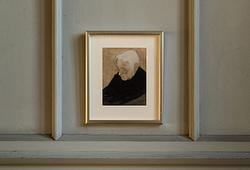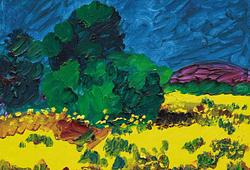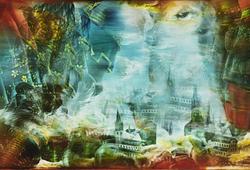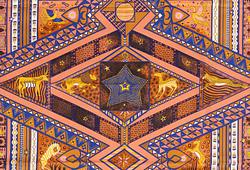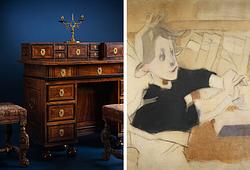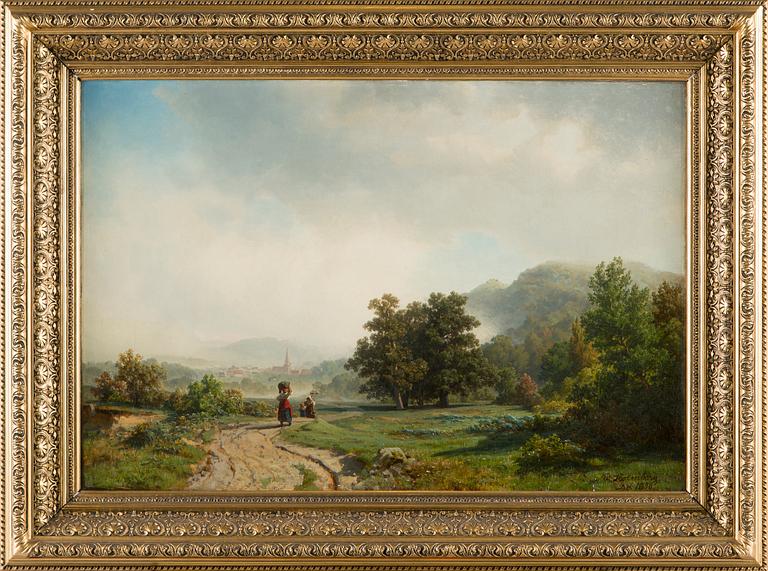Werner Holmberg
Werner Holmberg, Landscape from Germany.
Signed W. Holmberg Drf and dated 1856. Oil on canvas, 54x79 cm.
Wear due to age and use. Crazing.
Provenance
Florence Quensel (née Dickson); gift to grandson Arnold Helling in 1945; current owner.
More information
Werner Holmberg (1830-1860) was a leading figure in Finnish landscape painting. His promising career as an artist came to an abrupt end with his early death.
Holmberg had long dreamed of a career as an artist before finally deciding in 1853 to travel to Düsseldorf, which at the time was the most important centre of European landscape painting.
Before leaving for Düsseldorf, Holmberg had studied drawing and painting, in addition to his architectural studies and daily work, with Magnus von Wright and Berndt Godenhjelm, among others. At that time, there was still no art education at the academic level in Finland, so the opportunities to develop as an artist in his home country were limited.
In Düsseldorf, Holmberg studied under the Norwegian artist Hans Gude (1825-1903) and quickly adopted the teachings of the Düsseldorf school, which greatly accelerated his artistic and technical development.
The work “German Landscape”, dated 1856 and included in the Helsinki Spring Sale, is a testament to Holmberg's virtuosity and sure hand and is in many ways a prime example of Düsseldorf landscape painting, in which nature played a central role. The art students often travelled to the countryside in the summer to study the details of nature and made sketches of them. These sketches formed the basis for the actual paintings, which were realized in the studio during the winter. The same elements that were immortalized during the excursions into nature could be repeated in varying forms and compositions in several different paintings.
'German Landscape' is a fascinating composition, where the viewer's attention is drawn to the peasant women and the child on the path, which is enhanced by the dramatically mist-shrouded mountains and the city in the background. At the same time, the trees and the details of nature create a calm and balanced atmosphere in the painting. Also in this painting, Holmberg demonstrates his talent for conveying an interplay between light and shadow. The landscape may not give a completely realistic impression, but that is not the intention either - Düsseldorf painting did not strive for a true representation of the landscapes it painted. Rather, the works were idyllic compositions, intended to convey the mood the artist experienced when he immortalized the subject.
Werner Holmberg died of tuberculosis at the height of his career, aged only 29. Holmberg was already a respected and admired artist during his lifetime, and he inspired many artists of the next generation to follow in his footsteps towards Düsseldorf.




